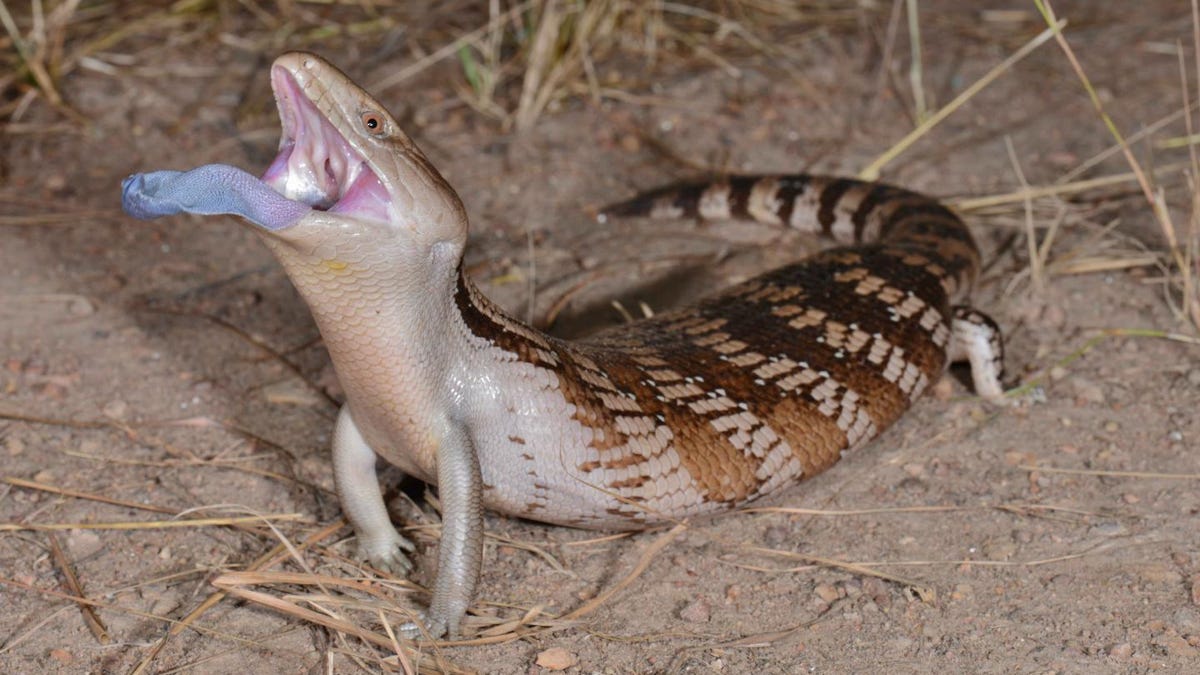Badass lizard freaks out predators with UV tongue
The blue-tongue skink hides an ultraviolet surprise for hungry predators.

Say ahh! A blue-tongue skink makes an anti-predator display.
Blue-tongue skinks automatically qualify as fantastic beasts thanks to their startling azure tongues, but a new study shows those tongues are even more interesting than they appear. The lizards' mouths house one of their last, best defenses against being eaten.
A team of researchers have investigated how the ground-dwelling skink's gaping maw is able to deter predators. It may come down to the ultraviolet-reflective nature of the tongue and how startling it'd appear to the skink hunters.
They found "the back of the northern blue-tongue skink's tongue is much more UV-intense and luminous than the front." The skinks, which are found across Australia, are normally well-camouflaged, so the use of the conspicuous tongue marks a last-ditch survival effort.
The tongue seems especially adept at spooking attacking birds, which (unlike humans) can see UV wavelengths. A foiled aerial attack is hard for the bird to re-initiate. Snakes and monitor lizards are also thought to have UV vision and are among skinks' main predators.
The researchers simulated attacks on skinks using fake predators meant to mimic a snake, monitor lizard and fox.
"The lizards restrict the use of full-tongue displays to the final stages of a predation sequence when they are most at risk, and do so in concert with aggressive defensive behaviors that amplify the display, such as hissing or inflating their bodies," said the study's lead author Arnaud Badiane, who is investigating the evolution of ultraviolet signals in lizards.
The researchers published their findings Thursday in the Behavioral Ecology and Sociobiology journal and suggest that future studies investigate how predators respond to the tongue display.
"We suspect that such a highly conspicuous display deployed at close range to a predator will induce a reflexive startle response that will deter predators," the paper says.
CNET Magazine: Check out a sample of the stories in CNET's newsstand edition.
Tech Enabled: CNET chronicles tech's role in providing new kinds of accessibility.

